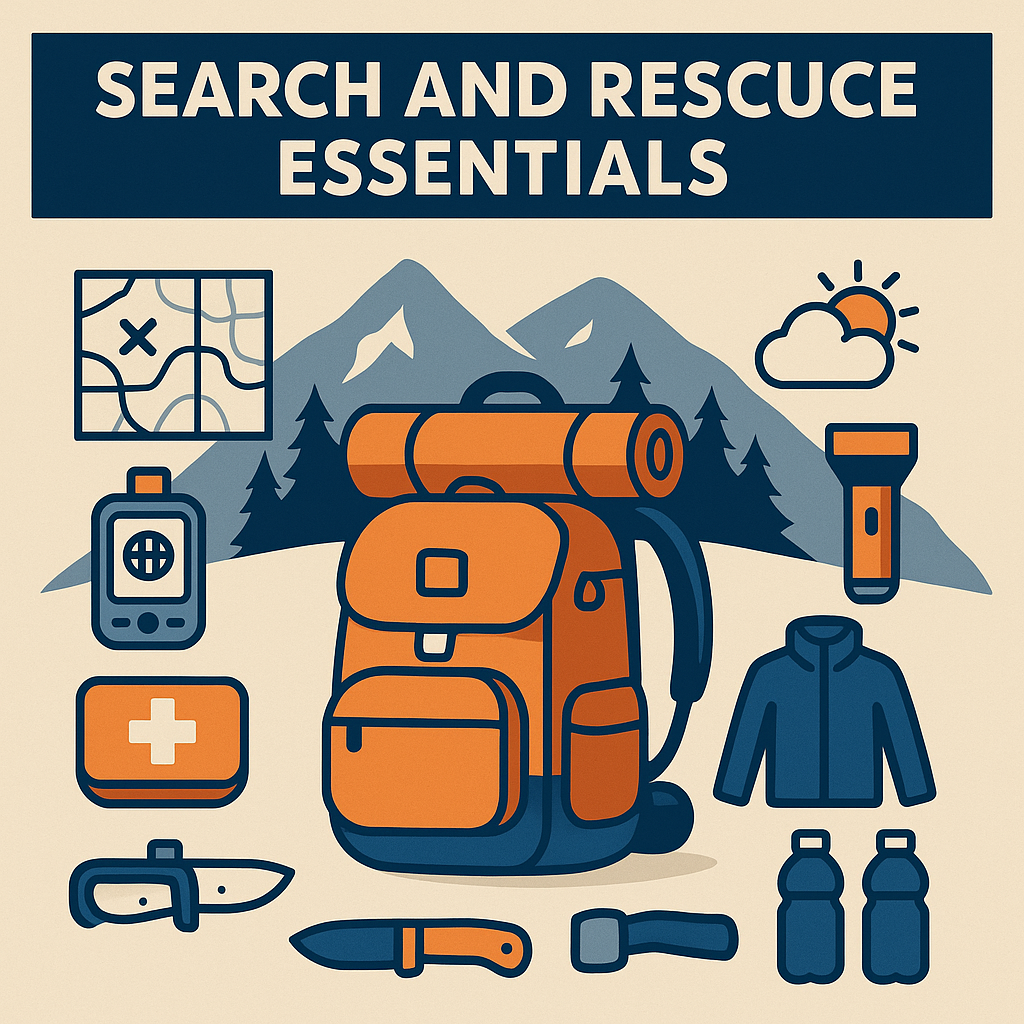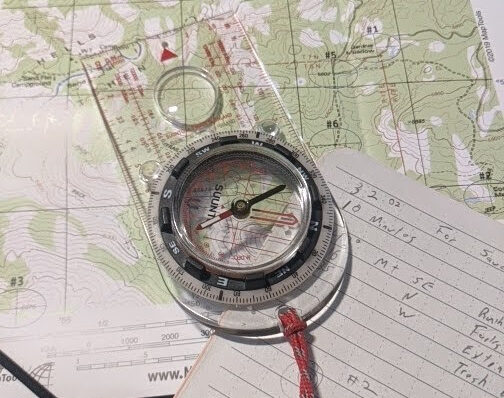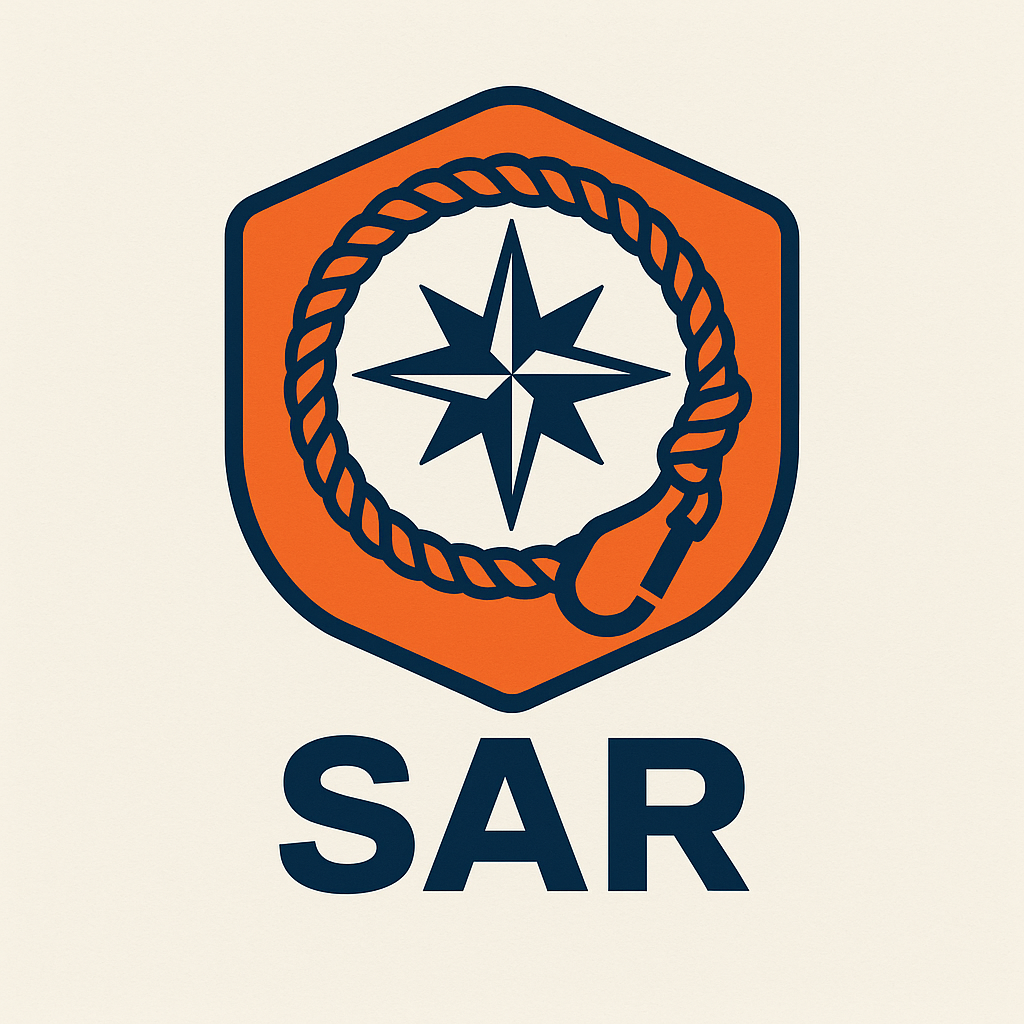
Search and Rescue Essentials:
Gear Search and Rescue requires rescuers to have the physical fitness, skills and determination for a successful mission. No matter how skilled or fit every rescuer relies on gear to help them get the mission done. From the clothing they wear, backpacks and gear they carry having the right equipment can mean the difference between safely completing the mission and disaster.
Every SAR member will always be carrying the 10 Essentials before heading out but this list will build on that in more detail.
We’ll cover just some of the important gear that most rescues will require. To make a complete list of all the gear would be long as most SAR team members also tend to be gear heads and the diversity in gear is huge!
Search And Rescue Essentials – Clothing
Clothing is such an important choice and requires much thought on consideration. A lot of factors go into choosing what clothing, shoes and items to wear for a mission. Knowledge of your area, the terrain, vegetation, weather patterns at different times of the year all come into play when deciding whats the correct clothing to wear on a mission. Lets break this down into a few categories:
Search And Rescue Essentials – Footwear
Having the correct foot ware is huge, the wrong shoes can make you miserable, the right shoes can make a tough hike way easier. Getting good supportive boots that will protect and support your feet is key. Depending on the time of year and conditions really dictates what the best type boots are. Winter conditions require snow boots that will keep your feet warm and blood circulating well. Summer on easy trail conditions may allow of a lighter boot while technical rock operations may require
Search And Rescue Essentials – Backpacks
Having a good backpack the is designed to carry the weight of all your gear is the difference between pain and suffering and being able to get to your subject and be ready for the next steps. A good pack depends a lot on your size, amount of weight you are carrying and how long you are out. Often someone might have several packs, a larger 24 hour pack (50l-70l) and sometimes a smaller pack for when they know where and how long they’ll be out that is closer to (30l-40l)
A good pack is durable, transfers weight effectively to your hips and shoulders and stores your gear in a way that is manageable and makes sense to you. Generally the lighter you can go and not compromise any of those features the better off you are.
Search And Rescue Essentials – Safety Gear
The nature of a SAR mission is to be in less then ideal condition generally, when unprepared this can be downright dangerous, but if you have the correct gear it can be safely managed. Some key items for safety to have with you:
- Leather Gloves – Used in all sorts of scenarios and keeps the digits counting to 10 effectively!
- Helmets – Any number of situations has risk of falling rocks, trees or you! Helmets keep you protected.
- Eyes – When working around moving ropes, helicopters, windy conditions or many other scenarios keeping your eyes protected is essential.
Search And Rescue Essentials – Communications
When going into the field having clear channels of communication to pass information from mission leads to the teams in the field can make all the difference in quickly finding a lost individual, getting the correct resources to the site. Communications looks different for various situations, but generally a team member will be carrying their phone or a VHF radio to talk with others.
Other common communications can extend beyond that, larger 800 radios, GPS devices that can communicate via satellites are frequently used for inter-agency comms.
Less frequently are glow sticks or flags can all be used to communicate with others and aircraft.
Search And Rescue Essentials – Medical
When heading out on any trip it’s always a good idea to bring along at least a simple first aid kit. Be able to take care of small cuts and bruises is important along with being able to do something about blisters, headaches and nausea.
Along with the basics that applies to anyone, make sure and bring along any medications that you may specifically need. Often for those who are allergic an epi-pen can be a life saving item that is a must have in your first aid kit.
A note on SAR Individual First Aid kits, these are not meant to replace your teams first aid kit, they are meant to keep you healthy and in the field if something comes up. It can often be a temptation to include far more in a first aid kit to care for a subjects potential needs but this should really be addressed by the teams first aid kit, not your own.
Search And Rescue Essentials – Navigation
Navigation tools are key for accomplishing the mission, and not just having them but being familiar with them enough to know how to confidently use them in the field. As technology has advanced there are many tools available to be used to find out where you are and how to get where your going.
The most common one now being smart phones that have map tools like CalTopo or other GPS based mapping apps. There are many different apps that can be used, common in SAR teams is CalTop
Still common are things like Garmin GPS devices that have longer battery life and is more single purpose. Still import although not used as much is a map and compass with a grid reader. Although not used the benefit is that they don’t run out of batteries and with understanding can be used to great effect.
Search And Rescue Essentials – Specialized Gear
Depending on the type of mission specialized SAR Gear may be needed. This can be Technical Rope gear, avalanche tools or any other number of things. Each SAR discipline require specialized gear that needs to be understood and checked. An important part of being ready is making sure to have knowledge of how to use this gear and making sure to leave room in your pack for extra gear you may need for a specific scenario.
Search And Rescue Essentials – Gear Maintenance
One important aspect for all who go into the wilderness is making sure your gear is in good working condition. Take care of you gear and your gear will take care of you. Going outdoors with faulty gear or gear in poor condition is a recipe for problems.
It’s always important to regularly check your gear, look for wear, defects and breaks. Always better to find something worn at home and replace it instead of it breaking when you really need it.
Make sure you gear aligns with what your team uses and it’s guidelines.



Pingback: Search and Rescue Missions Explained: What Really Happens During a Crisis - SarTalk
Pingback: The Confident Explorer’s Checklist: 10 Essentials for Every Wilderness Trip - SarTalk
Pingback: How To Join Search And Rescue - SarTalk
Pingback: Search and Rescue Fitness: Training for the Mission - SarTalk